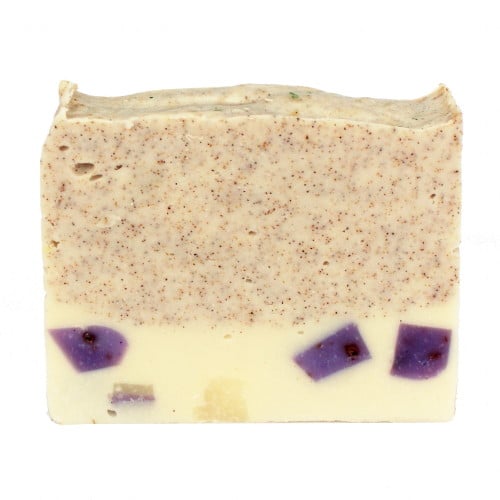
Homemade Peppermint Foot Scrub Soap Recipe
 It’s sandal season! If your feet are in need of some extra love, then you’ll definitely want to add this natural homemade peppermint foot scrub soap recipe to your beauty arsenal! It exfoliates with natural walnut shell powder and fine ground pumice to help keep feet smooth and soft. Don’t just use it during warm months though! This soap is perfect for skin care use year round for a more beautiful you!
It’s sandal season! If your feet are in need of some extra love, then you’ll definitely want to add this natural homemade peppermint foot scrub soap recipe to your beauty arsenal! It exfoliates with natural walnut shell powder and fine ground pumice to help keep feet smooth and soft. Don’t just use it during warm months though! This soap is perfect for skin care use year round for a more beautiful you!
Homeamde Peppermint Foot Scrub Soap Recipe
© Rebecca D. Dillon
Ingredients:
7.2 oz. 76° melt point (refined) coconut oil
10.8 oz. rice bran oil
10.8 oz. pomace olive oil
5.4 oz. sustainable palm oil
2 oz. refined shea butter
4.8 oz. lye (sodium hydroxide)
12 fluid oz. distilled water
At trace:
1 oz. sweet almond oil
1 oz. peppermint essential oil
3 ml eucalyptus essential oil
3 ml tea tree essential oil
1 Tablespoon walnut shell powder
1 Tablespoon fine ground pumice powder
1 teaspoon titanium dioxide
Instructions:
For this homemade peppermint foot scrub soap recipe I used the ends from my homemade natural summer festival soap and cut them into squares to add the decorative soap pieces in this soap. This is completely optional, but if you’d like to do this, be sure that if you’re embedding a scented soap that the scent blends well with peppermint. You’ll also want to choose a soap that will contrast nicely with a white or cream colored soap.
This homemade peppermint foot scrub soap recipe fits one of my wooden cold process soap molds and will yield 10-12 bars depending on how they are cut. My batch made ten 4.5-5 oz. bars of natural peppermint foot soap.
To create this homemade peppermint foot scrub soap recipe you need to be familiar with how to make cold process soap (or old fashioned lye soap) and follow my basic cold process soapmaking instructions. You will need a digital kitchen scale, an immersion hand (or stick) blender
, graduated plastic transfer pipettes
, a non-aluminum pot, glass measuring cup and other measuring and mixing utensils and containers.
Start by preparing your lye-water by measuring out the water in fluid ounces and weighing the lye. Then slowly pour the lye into the water in a well ventilated area and stir. Set aside to cool where it won’t get knocked over or accidentally be mistaken for drinking water.
Next weigh out the coconut oil, rice bran oil, olive oil, palm oil and shea butter and place into a large pot. Melt over medium heat. Once completely melted, remove from heat and set aside to cool.
While the lye-water and soapmaking oils are cooling you can prepare your other ingredients. Weigh out the sweet almond oil and peppermint essential oils. Use a Tablespoon measurement to measure out the walnut shell and pumice powders and a teaspoon to measure out the titanium dioxide. Set aside. Have your plastic transfer pipettes and eucalyptus and tea tree oils on hand for later. Line your soap mold and place the chunks of colored soap evenly along the bottom of the soap mold.
Once your ingredients have cooled to 100 degrees F or less, add the titanium dioxide to the soapmaking oils and mix with the immersion blender. Next, stir the lye-water into your soapmaking oils using your immersion hand blender. At a light trace stir in the sweet almond oil and peppermint essential oil. Using plastic transfer pipettes – a different one for each essential oil – measure out 3ml each of the eucalyptus and tea tree oils and stir into the soap. Mix well. Once the soap has reached a heavy trace pour HALF of the soap mixture into your prepared, lined mold with the soap chunks.
Next, add the pumice and walnut shell powders to the soap still in the pot and mix until the ingredients are evenly distributed, then pour this remaining soap into the mold on top of the soap you poured earlier. Cover and insulate the soap for 24 hours.
After your soap has completed the saponification process, you can cut your soap into bars to cure for 3 – 6 weeks before use.
For more of my homemade soap recipes, be sure to follow my DIY Bath and Body Board on Pinterest. You can also keep up with all of my new bath and beauty recipes, soap projects, and diy craft projects by liking me on facebook, following via twitter, and instagram.


